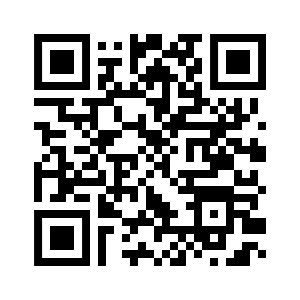PENGARUH PENYULUHAN TERHADAP PENGETAHUAN DAN SIKAP MENGONSUMSI TABLET TAMBAH DARAH
Abstract
Keywords
Full Text:
PDFReferences
De Benoist B, World Health Organization, Centers for Disease Control and Prevention (U.S.). Worldwide prevalence of anaemia 1993-2005 of: WHO Global Database of anaemia. Geneva: World Health Organization; 2008.
Gardner W, Kassebaum N. Global, Regional, and National Prevalence of Anemia and Its Causes in 204 Countries and Territories, 1990–2019. Current Developments in Nutrition. 2020 Jun 1;4:830–830.
World Health Organization. Anaemia in women and children [Internet]. [cited 2021 Nov 30]. Available from: https://www.who.int/data/maternal-newborn-child-adolescent-ageing/advisory-groups/gama/gama-advisory-group-members
Badan Penelitian dan Pengembangan Kesehatan Departemen Kesehatan RI. Laporan Nasional RISKESDAS 2018. Jakarta: Lembaga Penerbitan Badan Litbangkes; 2019.
Dinas Kesehatan. Laporan tahunan data kesakitan. Banjarmasin: Dinas Kesehatan Kota Banjarmasin; 2017.
Keohane EM, Smith LJ, Walenga JM, Rodak BF. Rodak’s Hematology: clinical principles and applications. 2016.
Tesfaye M, Yemane T, Adisu W, Asres Y, Gedefaw L. Anemia and iron deficiency among school adolescents: burden, severity, and determinant factors in southwest Ethiopia. AHMT. 2015 Dec;189.
World Health Organization. Prevention of iron deficiency anaemia in adolescents. New Delhi: The Organization; 2011.
Markosyan R, Arzumanyan A. Age of Menarche and Related Factors. Endocrinol Metab Syndr. 2017;06(05).
Kementerian Kesehatan Republik Indonesia. Pedoman Pencegahan dan Penanggulangan Anemia pada Remaja Putri dan Wanita Usia Subur (WUS). Kementerian Kesehatan; 2018.
Andani Y, Esmianti F, Haryani S, Yusniarita. Hubungan Pengetahuan dan Sikap Remaja Putri terhadap Konsumsi Tablet Tambah Darah (TTD) di SMP Negeri 1 Kepahiang. Jurnal Kebidanan Besurek. 2020 Dec;5(2):55–62.
Sassen B. Nursing: Health Education and Improving Patient Self-Management. 1st ed. Cham: Springer International Publishing : Imprint: Springer; 2018. 1 p.
Kamau M, Mirie W, Kimani S, Mugoya I. Effect of community based health education on knowledge and attitude towards iron and folic acid supplementation among pregnant women in Kiambu County, Kenya: A quasi experimental study. Ghose B, editor. PLoS ONE. 2019 Nov 25;14(11):e0224361.
Nasruddin H, Syamsu RF, Permatasari D. Angka Kejadian Anemia pada Remaja di Indonesia. Jurnal Ilmiah Indonesia. 2021 Apr;1(4):357–64.
Dinas Kesehatan Provinsi Kalimantan Selatan. Laporan Kinerja Bidang Kesehatan Masyarakat tahun 2019. Banjarmasin: Dinas Kesehatan; 2019.
Kahfi RA, Rahmayani D, Kurniawan D. The Relationship of Knowledge and The Level of Income of The Parent with The Incidence of Anemia in Young Women in SMPN 25 Banjarmasin. Dinamika Kesehatan. 2017 Dec 2;8(2):392–8.
Tim Riskesdas 2018. Laporan Provinsi Kalimantan Selatan RISKESDAS 2018. Jakarta: Lembaga Penerbitan Badan Penelitian dan Pengembangan Kesehatan; 2019.
Batubara JRL, Soesanti F, van de Waal HD. Age at menarche in indonesian girls: a national survey. Acta Med Indones. 2010 Apr;42(2):78–81.
Durda-Masny M, Hanć T, Czapla Z, Szwed A. BMI at menarche and timing of growth spurt and puberty in Polish girls – longitudinal study. anthranz. 2019 Mar 28;76(1):37–47.
Kaplowitz PB. Link Between Body Fat and the Timing of Puberty. Pediatrics. 2008 Feb;121:S208–17.
Idris IM, Wolday SJ, Habteselassie F, Ghebremichael L, Andemariam M, Azmera R, et al. Factors associated with early age at menarche among female secondary school students in Asmara: a cross-sectional study. Global Reproductive Health. 2021;6(2):e51–e51.
Karapanou O, Papadimitriou A. Determinants of menarche. Reprod Biol Endocrinol. 2010;8(1):115.
Sulistyowati AM, Rahfiludin MZ, Kartini A. Pengaruh Penyuluhan dan Media Poster Tentang Anemia terhadap Tingkat Pengetahuan dan Sikap pada Santriwati (Studi di Pondok Pesantren Al-Bisyri Kota Semarang). Jurnal Kesehatan Masyarakat. 2019 Oct;7(4).
Notoatmodjo S. Promosi Kesehatan dan Ilmu Perilaku. Jakarta: Rineka Cipta; 2007.
Abu-Baker NN, Eyadat AM, Khamaiseh AM. The impact of nutrition education on knowledge, attitude, and practice regarding iron deficiency anemia among female adolescent students in Jordan. Heliyon. 2021 Feb;7(2).
DOI: https://doi.org/10.20527/ht.v5i3.7739
Refbacks
- There are currently no refbacks.
Copyright (c) 2023 Homeostasis

Homeostasis is licensed under a Creative Commons Attribution 4.0 International License
Program Studi Kedokteran Program Sarjana
Fakultas Kedokteran Universitas Lambung Mangkurat
Jalan Veteran No.128 Banjarmasin
Phone: +62-878-1546-0096
email : [email protected]














